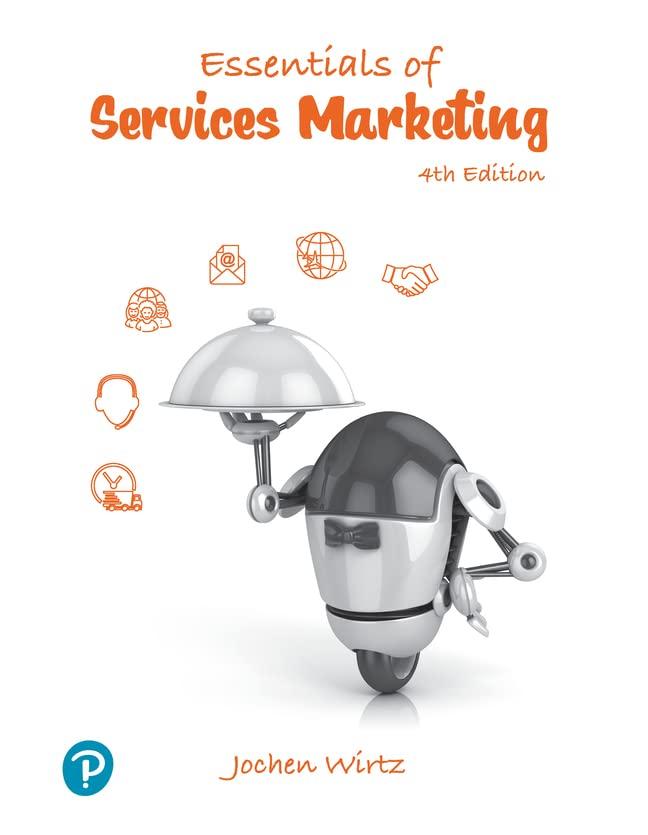Question
Section4. Auto dealer parts counterAfter 28 years of service, Bob, the parts manager of a large auto dealer has announced his retirement.The dealer parts department
Section4. Auto dealer parts counterAfter 28 years of service, Bob, the parts manager of a large auto dealer has announced his retirement.The dealer parts department dealt with a large variety of parts. Maintenance parts, which included items which wore out with use, such as brake pads, spark plugs, belts, and filters, represented a large portion of items sold.Repair parts for non-routine repairs ran from gaskets to engine controllers and exhaust systems. Some of these items were expensive, and the dealer did not know how to accurately forecast demand for them.Although maintenance items were primarily consumed by the dealer's internal service operation, repair parts were sold to independent repair shops and individuals in addition to the dealer's repair shop. After having lost money on body parts in the past, the dealer had adopted a policy of not keeping them in inventory but ordering them from the manufacturer on as needed basis.The dealer's service manager did not want to have customers' cars sit overnight at the dealer because they were waiting for parts. He considered this particularly unacceptable for maintenance parts but acknowledged that it might sometimes be unavoidable for repair parts.Unimpressed by the manufacturer's parts system, Bob had always made parts orders based upon his own knowledge of the parts market and judgement of demand. He was respected by the dealership management and had been friends with the owners for more than 3 decades. No one had questioned his decisions despite a high reliance on emergency shipments and a large amount of dead stock.The auto manufacturer was the main source of parts to the dealer. There was a set weekly schedule for ordering and deliver. Standard orders were made on Thursdays.Parts available at the manufacturer's closest parts distribution center were delivered to the dealer on the following Monday. Parts that had to be shipped from other distribution centers might take several days longer. For urgent situations, the dealer ordered"emergency" shipments. These incurred additional - and sometimes substantial - freight fees and arrived the next day.With Bob leaving, the dealer was going to have to revisit how it managed parts inventory.4-1. What inventory-related costs appear likely to be important in this case?Explain each in this context.

4-2. What options does the dealer have to manage its parts inventory (e.g., what kinds of inventory control systems or inventory management policies could it use)? What are the pros and cons of each? What is your recommendation for how they manage inventory in the future? What analysis should they perform to help them manage their inventory better? (15 points)
Step by Step Solution
There are 3 Steps involved in it
Step: 1
41 Inventoryrelated costs likely to be important in this case a Holding Costs These costs include expenses associated with storing inventory such as rent for warehouse space utilities insurance and de...
Get Instant Access to Expert-Tailored Solutions
See step-by-step solutions with expert insights and AI powered tools for academic success
Step: 2

Step: 3

Ace Your Homework with AI
Get the answers you need in no time with our AI-driven, step-by-step assistance
Get Started


